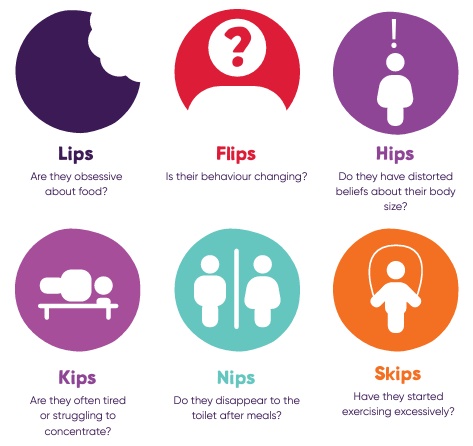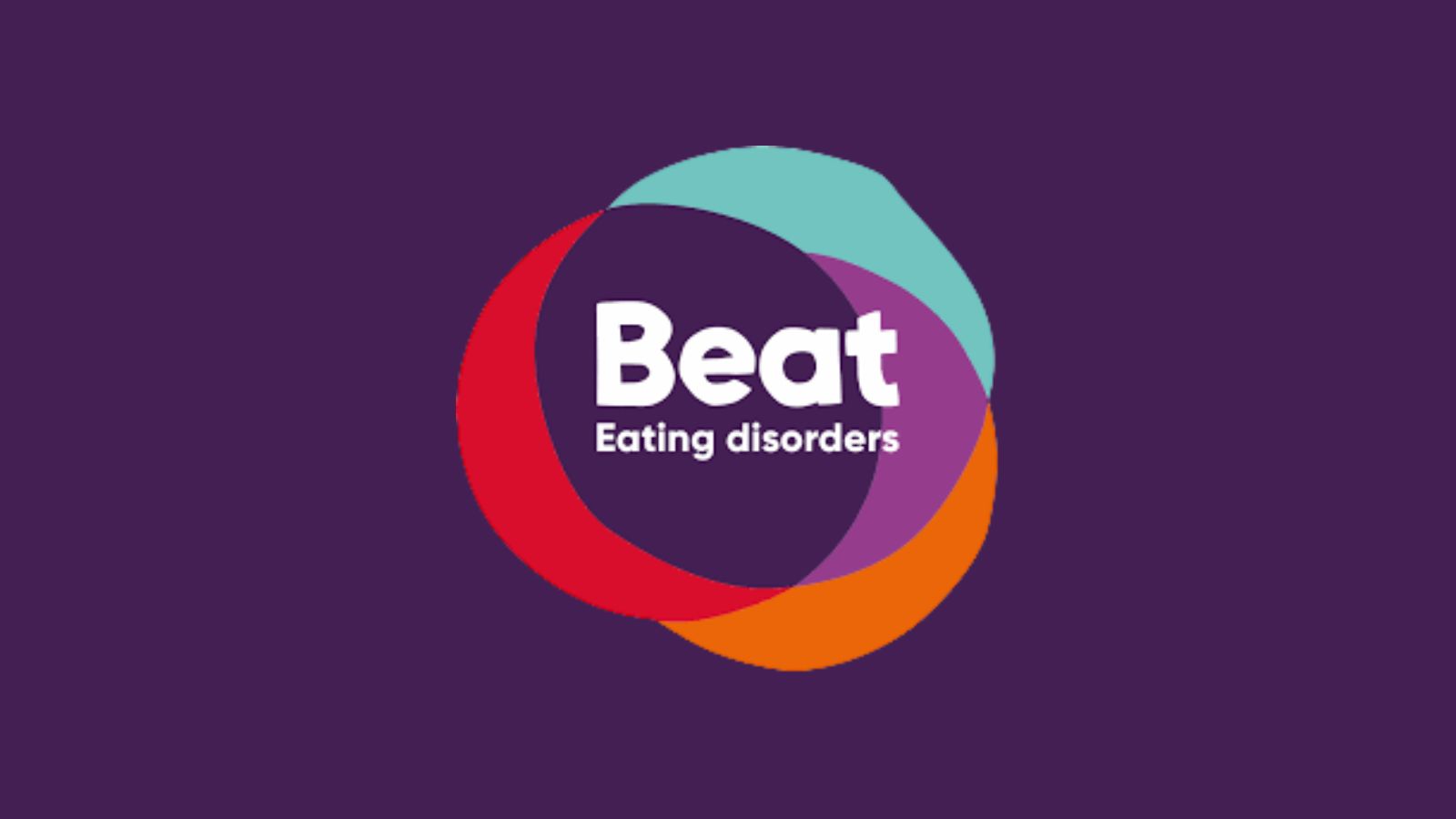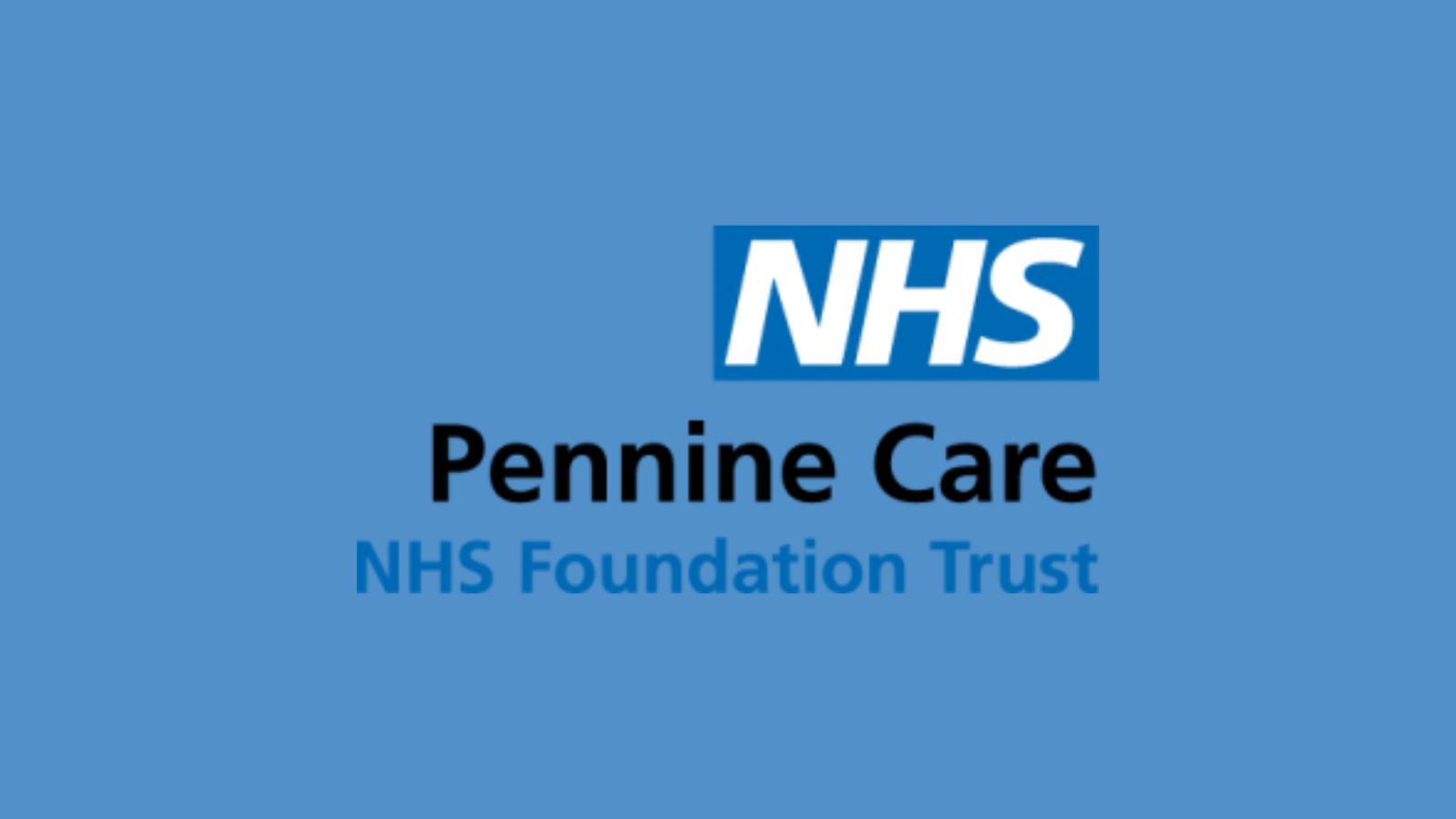Eating Disorders
Eating Disorders
Eating Disorders
What do we mean by an eating disorder?
Eating disorders can be life threatening, because of malnutrition and the high suicide risk. An eating disorder is most likely to develop during secondary school years.
An eating disorder is an illness, not a choice. It effects both sexes irrespective of social class and environment. It should be intended that students are treated respectfully and with compassion whilst they recover.
Among 100 high school students, around eight will suffer from an eating disorder; one of these may have Anorexia Nervosa and at least three may have Bulimia Nervosa.
For children under 13 years figures indicate that the main eating disorder is Anorexia Nervosa, affecting three in every 100,000 children.
Early intervention and treatment give young people the best chance of recovery. Without it, a proportion of sufferers continue to suffer during their adult years. This illness can affect both quality and duration of life.
Different types of eating disorder include:
Anorexia Nervosa where people are low weight due to limiting how much they eat and drink. They may develop ‘rules’ around what they feel they can and cannot eat, as well as when and where they will eat. As well as limiting how much they eat, they may do lots of exercise, make themselves sick, or misuse laxatives to get rid of food eaten.
Bulimia (or bulimia nervosa). People with bulimia are caught in a cycle of eating large quantities of food (bingeing), and then trying to compensate for that overeating by vomiting, taking laxatives or diuretics, fasting, or exercising excessively (purging).
Binge eating disorder (BED) is a where people eat very large quantities of food without feeling like they’re in control of what they’re doing. It can affect anyone of any age, gender, ethnicity or background, and evidence suggests it is more common than other eating disorders. People with binge eating disorder eat large quantities of food over a short period of time (called binge eating). Unlike people with bulimia, they do not usually follow this by getting rid of the food through, for example, vomiting, though sometimes they might fast between binges.
“Other specified feeding or eating disorder” (OSFED): Anorexia, bulimia, and binge eating disorder are diagnosed using a list of expected behavioural, psychological, and physical symptoms. Sometimes a person’s symptoms do not exactly fit the expected symptoms for any of these three specific eating disorders. In that case, they might be diagnosed with an “other specified feeding or eating disorder” (OSFED). This is very common. OSFED accounts for the highest percentage of eating disorders, and anyone of any age, gender, ethnicity, or background can experience it. It is every bit as serious as anorexia, bulimia, or binge eating disorder, and can develop from or into another diagnosis. People suffering from OSFED require support just as much as anyone else with an eating disorder.
Orthorexia refers to an unhealthy obsession with eating “pure” food. Food considered “pure” or “impure” can vary from person to person. This does not mean that anyone who subscribes to a healthy eating plan or diet is suffering from orthorexia. As with other eating disorders, the eating behaviour involved – “healthy” or “clean” eating in this case – is used to cope with negative thoughts and feelings, or to feel in control. Someone using food in this way might feel extremely anxious or guilty if they eat food, they feel is unhealthy.
Avoidant restrictive food intake disorder (ARFID) is a condition characterised by the person avoiding certain foods or types of food, having restricted intake in terms of overall amount eaten, or both. ARFID is different from anorexia nervosa, bulimia nervosa and related conditions; in ARFID, beliefs about weight and shape do not contribute to the avoidance or restriction of food intake. A diagnosis of ARFID would not be given at the same time as one of these other eating disorders, although it could precede or follow. A diagnosis of ARFID would also not be given if there is another clear reason for the eating difficulty, such as a medical condition that results in appetite loss or digestive difficulties. Someone might be avoiding and/or restricting their intake for several different reasons. The most common are the following:
They might be very sensitive to the taste, texture, smell, or appearance of certain types of food, or only able to eat foods at a certain temperature. This can lead to sensory-based avoidance or restriction of intake.
They may have had a distressing experience with food, such as choking or vomiting, or experiencing significant abdominal pain. This can cause the person to develop feelings of fear and anxiety around food or eating, and lead to them to avoiding certain foods or textures.
In some cases, the person may not recognise that they are hungry in the way that others would, or they may generally have a poor appetite. For them, eating might seem a chore and not something that is enjoyed, resulting in them struggling to eat enough. Such people may have restricted intake because of low interest in eating.
What are the warning signs that someone may be developing an eating disorder?
Thoughts:
Lots of preoccupation in their thoughts about food
Restriction of food
Thinking about food a lot
Expressing feeling fat, greedy, weak
Thinking that their tummy or body parts are too big
Saying they are planning to eat less
Going vegetarian/vegan
Behaviour signs:
Leaving food uneaten regularly
Bringing lots of food in for others, but not eating themselves
Eats the same foods every day
Eat food very slowly
Chew lots of gum to suppress hunger
Drink large volumes of fluid or reduce fluid intake
Unusually dissect food
Seems anxious at meal-times
Goes to the toilet after eating
Puts foods into pockets
May sign up for lots of exercise
Mood Presentation:
Moods can become irritable/suffer mood swings
Obsessive studying for long hours
Eating disorder can be seen with those on the autistic spectrum
Students thinking can become inflexible, rigid and black and white in nature
Students can brighten when talking about diet, exercise or body shape
Suffer from low self- esteem
Critical of self
Express that they suffer guilt, shame and self-disgust
May feel they want to die
Express certainty that they are fat
Appear withdrawn/isolated
Physical health:
Weak, tired, lethargic
·Wear baggy clothes to hide emaciated appearance and/or weight loss
Feeling cold
Wears layers of clothes due to feeling cold
Hands are cold all the time
Growth is affected
Weight loss
Hands look bony; mouth and eyes look tight over skull due to weight loss
Hair thins and/or falls out a lot
Dry skin
Body checking on weighing scales and or visibly checking themselves a lot
A helpful way to remember
what the warning signs of someone developing an eating disorder is to use the following prompts:
FLIPS - Are they obsessive about food?
LIPS - Is their behaviour changing?
HIPS - Distorted beliefs about their body size?
KIPS - Tired or struggling to concentrate?
NIPS - Disappear to the toilet after meals?
SKIPS - Started exercising excessively?

What to do when a child or young person discloses that they think they may have an eating disorder
If this is the first time the young person has told anyone of their concerns, it is important to help them to seek support. As eating disorders can be an extremely serious condition, it will be important for the student to be assessed by an appropriate health professional.
It will be crucial that parents are informed about your concerns so they can help their child or young person seek help.
It may be that you can help direct the parents and student to receive help from their local specialist eating disorder service or their GP.
Remember - If you suspect a young person is developing an eating disorder, it will be important to discuss your concerns with them; consider discussing this with their parent or carer; decide which other staff will need to be informed; and identify a designated staff member to liaise with the parent.
Key points to remember
Anyone from any walk of life at any age can develop at eating disorder including young children.
Eating disorders affect people from all from the backgrounds, religions, cultures and demographic groups.
Eating disorders affects both males and females.
People who develop eating disorders often keep the problem to themselves for a very long time which means opening- up about it can be difficult.
Empathy is an effective tool for responding to eating disorder problems we may not be able to fix the problem, but it is important that we have an empathic response.
If the young person continues to struggle with eating disorder it is not because you have failed to help them or not being supportive enough - an eating disorder is a complex mental disorder.
How should schools respond to students who have a diagnosis of an eating disorder?
School policies should include the following:
Grant permission for pupils to attend health appointments in school time if necessary.
It will be helpful for schools to liaise with the specialist teams about the young person’s treatment plan and requirements. It may be that teamwork is required to support the treatment plan.
The main type of treatment for an eating disorder, in the first instance, is a refeeding plan which will need to be followed in school.
Consideration of a part-time timetable, when appropriate, or indeed a phased return may be indicated. In exceptional circumstances Home Tuition may need to be considered when a student cannot attend school for a length of time.
A flexible approach to learning and school life will be key to the success of the treatment plan. This might include:
Online lessons or work to complete at home – at the right pace and level – should be considered.
Handing in homework late/stretched or suspended deadlines should be considered for a time.
Exam adjustments.
Be flexible with a ‘time out of lessons pass’ for students who may be suffering extreme stress.
‘Named teachers’ to go to for support either in urgency or planned times each week.
Consideration of a ‘toilet pass’ when food and fluid is prescribed at such regular intervals.
Lockers to keep heavy bags to keep physical exertion to a minimum.
Lift passes where necessary.
Regular ‘meet up’ times with designated teachers.
Parental support at break and lunch times to be considered to support the eating plan.
Late starts to accommodate students finishing breakfasts or finishing early to get home in time to have snacks.
Supporting students to eat in school
Food is central to treatment. A student cannot recover unless they recover a healthy weight and unless they eat regularly. In school they will usually need snacks and lunch. Regular eating is crucial for those who would otherwise binge and/or purge. When schools provide the right level of support around meals, a student can resume a normal life sooner – and normal life is part of recovery. Without school support, students may need to stay at home for a long time. If they go into school and do not eat what is required, the eating disorder is likely to get worse.
Levels of support to be considered:
Students who are not well enough to be in school may be in hospital or at home. Some home working may be appropriate.
Students can be supported by their parents to eat their food in a private room in school or in the car park if appropriate.
School staff can offer support for the student to eat their food in a calm, private room. A good amount of time should be allocated. Sometimes it can be helpful to have a friend join.
School staff can offer support to students and ensure that they are monitoring the compliance of eating from a distance. This can be viewed as a low-level safety net support when someone is in recovery for example.
Additional things to consider:
Parents are likely to be highly stressed as they will put their work, leisure time, sleep and indeed their life on hold, as treating their child becomes about clinical appointments and supporting meals. A non-judgemental supportive stance will be helpful to parents and can make a real difference.
It will be helpful to have a designated person who can become the ‘go to’ person to support the treatment plan and discuss any adjustments that may be needed. This person may liaise with other class teachers and provide support for other teachers so that basic awareness of the treatment plan for the student can be communicated across the teaching group where necessary.
Parents should be able to discuss food and any canteen arrangements with school staff.
The young person may not be able to take part in physical education for a time. It is helpful for teachers to not have them sat watching the lesson. They should be able to go and take part in other activities. Being unable to take part in PE should not be treated as a punishment.
Schools should be mindful of any triggering subject matter in any PHSE type studies or special mental health subject matter/teaching in assemblies/form lessons. Students may be excused from such lessons if necessary.
Should students be off school for long periods of time it is helpful to have some contact from school to help them to continue to feel connected to school life with some regularity.
Safety Care plan for young people who are unwell and require support to maintain their attendance at school.
As eating disorders can affect physical health significantly it will be important that there is a health safety plan in place for teaching staff to be confident that they can seek help if needed.
There are many and varied symptoms that can occur.
The main ones, although rare, which may require them to seek urgent care include collapse, chest pain and or shortness of breath without any exertion. If such situations occur, it will be important to consider if an ambulance is required to seek urgent attention.
Students with eating disorders often feel faint; light-headed and/or dizzy. Students may say they feel sick and or feel nauseous. It may be that with some hydration and a check-in regarding whether they have managed their food and or snacks, with a place to rest for a short time they can resume their lessons. However, this will need careful consideration with all involved in the plan if the student experiences such symptoms.
It will be important for the school to have an alert on the student record so that all staff are aware should any of the issues present.
Useful Links/Resources

BEAT
are the UK’s eating disorder charity and they have a wide range of resources and support available. See below for further information.
Tips Poster. Spotting the first signs of symptoms of an eating disorder
Beat also provide online and telephone support for children & young people and for anyone who’s worried about someone they care for: www.beateatingdisorders.org.uk
Help for young people - Youthline: 0808 801 0711. Email: fyp@beateatingdisorders.org.uk
Help for adults Helpline: 0808 801 0677. Email: help@beateatingdisorders.org.uk
.jpg)
Families Empowered And Supporting Treatment for Eating Disorders
FEAST
are a global community of parents, and those who support parents in families affected by eating disorders. They provide a range of resources and support.
Find support in Greater Manchester

Bury, Oldham, Heywood, Middleton and Rochdale) Pennine Care NHS Foundation Trust
Pennine Care Foundation Trust Community Eating Disorder Service North
Telephone: 0161 716 1560
Email: Pcn-tr.ceds@nhs.net
How to make a referral for additional support
Signpost to website: Community eating disorders service :: Pennine Care NHS Foundation Trust
Click link to how to make an appointment
Complete form and email to pcn-tr.ceds@nhs.net